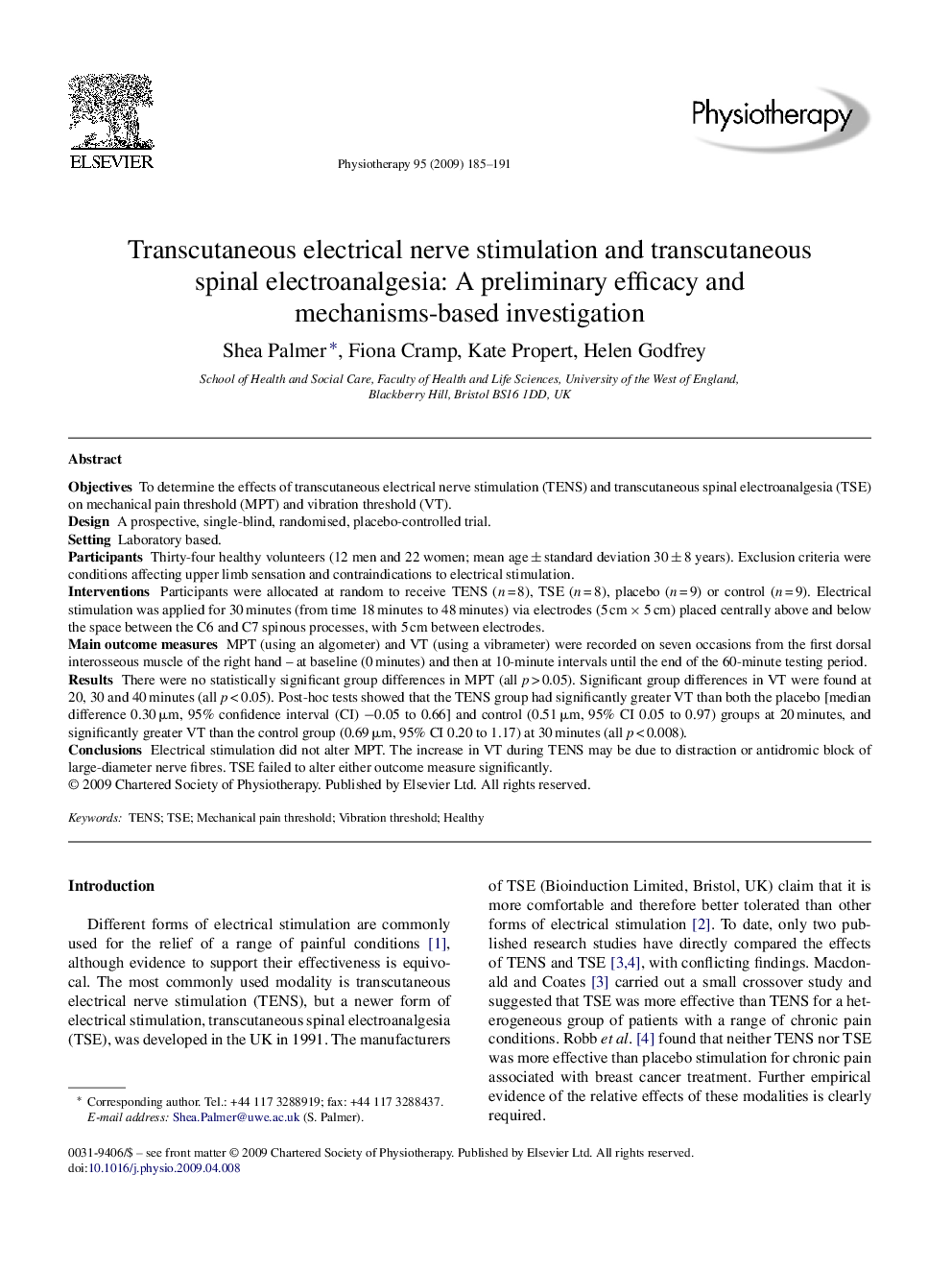| Article ID | Journal | Published Year | Pages | File Type |
|---|---|---|---|---|
| 2627903 | Physiotherapy | 2009 | 7 Pages |
ObjectivesTo determine the effects of transcutaneous electrical nerve stimulation (TENS) and transcutaneous spinal electroanalgesia (TSE) on mechanical pain threshold (MPT) and vibration threshold (VT).DesignA prospective, single-blind, randomised, placebo-controlled trial.SettingLaboratory based.ParticipantsThirty-four healthy volunteers (12 men and 22 women; mean age ± standard deviation 30 ± 8 years). Exclusion criteria were conditions affecting upper limb sensation and contraindications to electrical stimulation.InterventionsParticipants were allocated at random to receive TENS (n = 8), TSE (n = 8), placebo (n = 9) or control (n = 9). Electrical stimulation was applied for 30 minutes (from time 18 minutes to 48 minutes) via electrodes (5 cm × 5 cm) placed centrally above and below the space between the C6 and C7 spinous processes, with 5 cm between electrodes.Main outcome measuresMPT (using an algometer) and VT (using a vibrameter) were recorded on seven occasions from the first dorsal interosseous muscle of the right hand – at baseline (0 minutes) and then at 10-minute intervals until the end of the 60-minute testing period.ResultsThere were no statistically significant group differences in MPT (all p > 0.05). Significant group differences in VT were found at 20, 30 and 40 minutes (all p < 0.05). Post-hoc tests showed that the TENS group had significantly greater VT than both the placebo [median difference 0.30 μm, 95% confidence interval (CI) −0.05 to 0.66] and control (0.51 μm, 95% CI 0.05 to 0.97) groups at 20 minutes, and significantly greater VT than the control group (0.69 μm, 95% CI 0.20 to 1.17) at 30 minutes (all p < 0.008).ConclusionsElectrical stimulation did not alter MPT. The increase in VT during TENS may be due to distraction or antidromic block of large-diameter nerve fibres. TSE failed to alter either outcome measure significantly.
